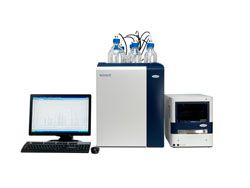New! Biochrom 30+ Amino Acid Analyzers
Biochrom launches the Biochrom 30+ Series of amino acid analyzers - the gold standard in dedicated amino acid analysis...

Biochrom launches the Biochrom 30+ Series of amino acid analyzers - the gold standard in dedicated amino acid analysis. These instruments accurately identify and quantify free amino acids, as well as the amino acid composition of proteins and peptides. Specific applications include:
Detection and monitoring of metabolic disease and IEM, such as PKU, in urine, plasma and CSF.
Protein and peptide analysis for pharmaceutical applications.
Nutrition and compositional analysis in food, drink and animal feed.
The new Biochrom 30+ Series offer rapid protocols that increase sample throughput by cutting analysis time compared with standard protocols. The instrument is fully automated with the user-friendly software controlling all functions, from the autosampler to the analysis and export of data. Advanced fluidics and robust hardware mean easy maintenance for users, backed by the reassurance of Biochrom’s dedicated service and support team.
A unique feature of all Biochrom amino acid analyzers is the column cleaning and repacking service, giving columns an almost indefinite life and cutting the cost of ownership.
Biochrom has a worldwide reputation for excellence based on a forty-year history of manufacturing amino acid analyzers.
For more information visit the website
Removing Double-Stranded RNA Impurities Using Chromatography
April 8th 2025Researchers from Agency for Science, Technology and Research in Singapore recently published a review article exploring how chromatography can be used to remove double-stranded RNA impurities during mRNA therapeutics production.
The Effect of Time and Tide On PFAS Concentrations in Estuaries
April 8th 2025Oliver Jones and Navneet Singh from RMIT University, Melbourne, Australia discuss a recent study they conducted to investigate the relationship between tidal cycles and PFAS concentrations in estuarine systems, and offer practical advice on the sample preparation and LC–MS/MS techniques they used to achieve the best results.





